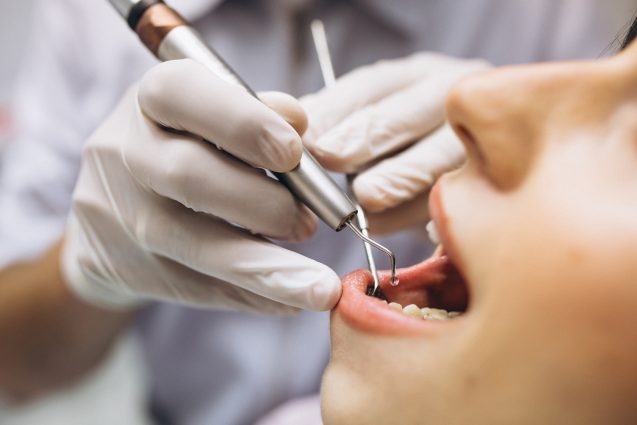Smiling has a huge impact on our wellness. People tend to smile less when they are not happy with their teeth, whether that be related to health or cosmetic issues, making them feel self-conscious therefore not wanting to smile. Smiling has a great impact on us not only physically, but also emotionally and socially. It has been observed that compared to adults, children are seen more often smiling. Research shows that children smile on average 400 times per day whereas, the older you get the less you tend to smile, only 40-50 times per day for an average happy adult and 20 times per day for the typical adult.
Smiling has been shown to have numerous health benefits including reduced blood pressure, increased endurance and reduced pain. This happens when our bodies release cortisol and endorphins. By smiling regularly, it helps release your negative emotions, reduces your stress levels and puts you in an overall good mood.
Not only does smiling benefit yourself but also those around you. When you see another person smile our brain is activated in a way that also makes us feel better. Smiling has a huge effect on us socially as well. By smiling it makes people feel comfortable to engage in a conversation with you because you look more approachable. Have you heard that yawning is contagious? Well, it’s been proven smiling is as well. You may see someone smiling and not even realize, unconsciously you smile as well.
References
verywellmind
sclhealth
livelifegetactive
More
Pregnancy is a life changing experience involving massive changes to the body. However, despite the already large amount of stress a women’s body induces during pregnancy, it remains absolutely essential that good dental health and dental checkups are maintained. It is important that once you are aware that you are pregnant, that you notify your dentist. Extra precautions need to be taken when women are pregnant as they are more susceptible to oral health issues due to a wide range of reasons.
Gum health
Hormonal changes during pregnancy incur noticeable effects in soft tissue after about 2 months of pregnancy. Gums may become inflamed and bleed more easily when flossing or brushing. In some cases, this excess gum bleeding can be a sign of pregnancy gingivitis.
Pregnancy gingivitis is a disease responsible for much of the gum inflammation caused during pregnancy affecting around 60% of women during pregnancy. These infected gums encourage the settling of bacteria, further increasing risk of gum disease. To avoid or manage pregnancy gingivitis, one can continue to brush and floss regularly, drink water frequently and even try out a sugar-free gum containing xylitol (a chemical that restricts bacterial growth).
X-Rays
It’s a common misconception that during pregnancy dental x-rays can be extremely harmful towards the fetus and should be avoided, however this is unhelpful and false.
The amount of radiation produced by a typical dental x-ray is very low, with radiations levels just above that induced by eating a banana. Overall, all dental X-rays are okay for pregnant women and have an extremely low chance of affecting the fetus. Ultimately, the risk of undiagnosed issues due to not receiving a necessary X-ray is far greater than the potential risk a dental X-ray will have on the fetus or the mother.
Vomiting
Something that is often overlooked is the effect that vomiting has on oral health. Many women experience vomiting as a frequent symptom during pregnancy making it something that needs to be accounted for. With a pH of 2.0, vomit is highly acidic. These high levels of acidity are due to the stomach acid contained in the vomit. The stomach is lined with thick mucus protecting it from stomach acid, however in the mouth; the high acidity of vomit is erosive.
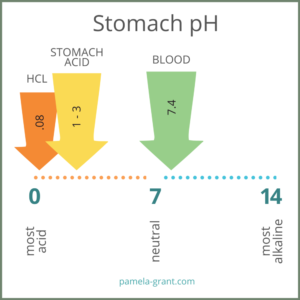 The stomach acid in vomit is able to erode and soften strong materials, such as bone, not to mention soft tissue such as your gums. The softening of the enamel can increase susceptibility to the more common bacterial infections and enamel erosion can lead to increased sensitivity. Both of these can eventually lead to the requirement of extractions, restorative work or other procedures.
The stomach acid in vomit is able to erode and soften strong materials, such as bone, not to mention soft tissue such as your gums. The softening of the enamel can increase susceptibility to the more common bacterial infections and enamel erosion can lead to increased sensitivity. Both of these can eventually lead to the requirement of extractions, restorative work or other procedures.
To minimise the effect that vomiting has on your teeth, there are a few simple things you can remember to do.
- After vomiting, immediately rinse with water as this reduces acidity in your mouth
- Avoid brushing your teeth directly after as this can actually be counterproductive as acid may only be further penetrated into the enamel
- Brush with a fluoride-based tooth paste (which increasing tooth resistance to acids)
- Drink water frequently
- Book dental check-ups to monitor and help stay on top of dental health
Change in Diet
Another experience many women undergoing pregnancy share is a change in diet or new ‘food cravings’ due to hormonal changes. Pregnancy limits the body’s ability to absorb the hormone leptin (a hormone which monitors hunger), creating the sometimes quite random changes in appetite. Many women have found that their tendency to find comfort in junk food increases, with common reports of cravings for ice cream, chocolate and potato chips.

The increase of sugary foods into ones diet is never a good thing; especially for pregnant women whose bodies are already undergoing massive changes leaving them with a reduced immune system. The increase of sugar will increase risk of dental decay, creating further issues.
Another common yet quite obscure food craving when pregnant is ice. Many women find that they crave munching away on ice chips or ice cubes. As tempting as it may be, it is also recommended that this be avoided. Ice is just as hard as tooth enamel, meaning when ice is munched on not only is the ice damaged, but also the teeth. Furthermore, exposing your teeth to the cold temperatures of ice can also increase sensitivity due to damage caused to the enamel.
Summary:
- Notify your dentist when as soon as you discover you’re pregnant
- X-rays are not harmful during pregnancy
- Pregnancy hormones can increase risk of gum related issues
- Manage unhelpful food cravings such as sugary foods or ice
- Know the right precautions to take when vomiting
References:
Pregnancy and Oral Health
Improve Your Oral Health and Improve Your Baby
Healthy Living – Pregnancy
How Strong is Stomache Acid
Eating Disorders and Dental Health
Common Pregnancy Cravings
Your Horomones – Leptin
Effects of Ice Chewing on Teeth
Pregnancy Week by Week
Dental X-Rays – the Facts You Need to Know
Women Oral Health – Pregnancy
6 Dos and Donts of Pregnancy
Xylitol for Oral Health
More
By Signature Smiles
26 Jul, 2022
Uncategorized
braces, dental care 1700s, dental care 1800s, dental care 1900s, dental history, egyptian braces, hisotry of braces, history of orthodontics, orthodontics, traditional braces
Throughout our history as the human race, beauty and health regimes have gone in and out of trend; however, one constant has been the desire for straight teeth and subsequent techniques practised and developed over thousands of years.
Ancient History
 The history of orthodontic work goes back well beyond 100BC, leaving us with almost unrecognisable precursors.
The history of orthodontic work goes back well beyond 100BC, leaving us with almost unrecognisable precursors.
Many ancient civilisations, such as Ancient Greece, Rome and Egypt began focusing on oral cosmetics through teeth alignment; the oldest record being from Ancient Egypt.
Archaeologists have discovered intricate structures of metal bound around the teeth of Egyptian mummies. As clear in the image above, the use of contraptions similar would’ve been not only extremely painful but also inconvenient. Orthodontic devices like these are thought to only have been seen on extremely wealthy individuals, including Cleopatra. There is also evidence to suggest that these contraptions were often applied after the death of the individual. The societal significance of being able to afford such a procedure had been believed to be highly beneficial when entering the afterlife. This ideology of braces benefiting you in the afterlife was not carried through into modern orthodontics.
1700s
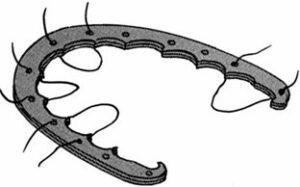 It wasn’t until the 1700s that orthodontic work progressed significantly, being particularly prevalent in France. New practices such as the removal of ‘third molars’ (wisdom teeth) had become common. With credit to French researcher, Pierre Fauchard (publisher of The Surgeon Dentist; or Treatise on the Teeth), the concept of wires and brackets restrained to the teeth was explored. This was further supported by his invention of ‘the bandeau’ (a metal horse shoe shaped frame bound to the teeth), along with other cosmetic devices such as bridges. The bandeau acknowledged the desire for round symmetrical teeth alignment, and used a simple device (as shown in the image above) to force teeth movement into the mould.
It wasn’t until the 1700s that orthodontic work progressed significantly, being particularly prevalent in France. New practices such as the removal of ‘third molars’ (wisdom teeth) had become common. With credit to French researcher, Pierre Fauchard (publisher of The Surgeon Dentist; or Treatise on the Teeth), the concept of wires and brackets restrained to the teeth was explored. This was further supported by his invention of ‘the bandeau’ (a metal horse shoe shaped frame bound to the teeth), along with other cosmetic devices such as bridges. The bandeau acknowledged the desire for round symmetrical teeth alignment, and used a simple device (as shown in the image above) to force teeth movement into the mould.
Fauchard was also responsible for the revelation that his studies on orthodontics were better demonstrated on children, due to their undeveloped teeth roots. Fauchard passed away in 1761, but his legacy led to huge developments in the orthodontic industry for many decades to come.
Late 1800s
In the late 1800s, the use of rubber bands were popularised in the orthodontic industry.
The ‘wire crib’ became the standard device used for straightening teeth, marking the start of modern orthodontics. The common procedure consisted of the wire crib, bound by rubber bands which were periodically tightened. This concept of small adjustments over periods of time resulted in a slightly less painful procedure. The inclusion of elastics also began practise in the late 19th century, for bettering jaw position, facilitating for further accuracy in the alignment of the teeth.
1900s
 During the 20th century much of the orthodontic routine mirrored that of today, with the use of impressions for more acute analysis, the frequent of X-rays. A range of materials were used in orthodontics, from organic materials, such as and wood and ivory, to the preferred, but expensive, materials such as silver and gold. Due to the properties of gold, its malleability made it the seemingly perfect candidate; however the expense limited its demand to wealthier classes.
During the 20th century much of the orthodontic routine mirrored that of today, with the use of impressions for more acute analysis, the frequent of X-rays. A range of materials were used in orthodontics, from organic materials, such as and wood and ivory, to the preferred, but expensive, materials such as silver and gold. Due to the properties of gold, its malleability made it the seemingly perfect candidate; however the expense limited its demand to wealthier classes.
The 1900s was also responsible for term ‘braces’. Derived from the French root word ‘bracier’, (meaning to restrain, hold tightly to something) ‘braces’ was born.
2000s
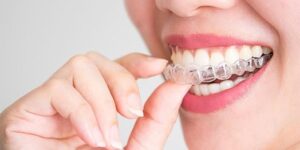 Finally we have reached the familiar modern day braces. With quick treatment durations (spanning from a few months to a few years), and significantly less painful technologies; the slight discomfort associated with modern day braces is truly overlooked. The treatment of orthodontic work is more accessible than ever before, with reduced prices and an increase in practices. With over 60% of Australians considering or undertaking orthodontic treatment, the rise of the industry has resulted in 552 orthodontic practices just within the country.
Finally we have reached the familiar modern day braces. With quick treatment durations (spanning from a few months to a few years), and significantly less painful technologies; the slight discomfort associated with modern day braces is truly overlooked. The treatment of orthodontic work is more accessible than ever before, with reduced prices and an increase in practices. With over 60% of Australians considering or undertaking orthodontic treatment, the rise of the industry has resulted in 552 orthodontic practices just within the country.
Typical modern day braces consist of brackets (typically made of stainless steel), which are bonded using adhesive to the teeth. A wire which is threaded through the brackets is bound on with elastic bands. The pressure provided through the wire is what initiates the movement of the teeth.
Moving on from traditional braces, we have the new and flashy ‘Invisalign’ or aligners. Invisalign was the first company to produce clear aligners. Founded in 1998 by at the time university student Zia Chishti, Invisalign has sky rocketed, with many other companies creating similar products, such as ClearCorrect.
Aligners have been popular since introduced to the market due to the cosmetic benefit, especially compared to its predecessor; traditional braces. With a very similar price to traditional braces, they remain an accessible option.
However at this stage, aligners are a slightly less flexible option. Those with a cross bite, a large under bite or a large overbite sometimes face more difficulty pursuing this route.
As we look forward into the future of orthodontic treatment, we can predict treatment durations and prices reducing. With an overall predicted growth of 11% in dentists (2018-2028), the future of dentistry will be able to facilitating more research and more advancement giving us lots to look forward to.
References
A Historical Timeline of Orthodontics
The History of Orthodontics: From Ancient Braces to Invisalign
Pierre Fauchard the Father of Modern Dentistry
Advances In Dentistry, 1900-1949
Dental braces: Before Braces
Pioneers and Milestones in the Field of Orthodontics
A Brief History of Braces
Ancient Dentistry
Oral Health and Dental Care in Australia
Invisalign: Teeth Straightening with Clear, Nearly Invisible Braces
Dentistry’s bright future
More
With more support than ever before in the health industry, there are multiple new and exciting developments in technologies that are changing dentistry. From smart toothbrushes to virtual reality technology, this month’s blog will discuss three currently in the market.
Implants

A dental implant is a medical device mimicking a tooth which is cemented to the jaw using a screw like structure. Implants are used for people needing teeth replacement that want the convenience of a long-term solution that stays in the mouth (unlike dentures).
Although the first dental implant was installed in 1965, implants have only just recently become a more affordable and popular choice, with the global dental implant market at $5.17B AUD.
Recent advancements in the implant industry include antibacterial coated implants. The antibacterial coast consists of a silica gel with antibacterial agents which further reduce the chance of infection.
Smart toothbrushes
Smart toothbrushes a recent and enticing device in the dental market. These smart toothbrushes contain pressure sensors that translate to a more comprehensive understanding of the user’s mouth. The user can navigate the status of their previous cleans and overall brushing health. The factors that determine brushing health include pressure, frequency, and brushing coverage; notifying you on areas that may have been missed or need more attention.
Although one does not need a smart toothbrush to clean well, with the real time feedback from smart toothbrushes, the cleaning process is far more engaging and therefore can be more effective, particularly for those needing extra support cleaning their teeth. Smart toothbrushes start at around $50 making them an affordable choice.
Dental simulator
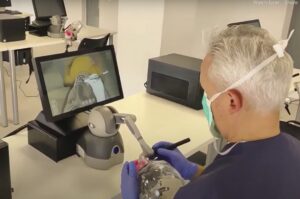
As we have seen virtual reality, or ‘VR’, become a riveting piece of tech in the entertainment industry, its benefit is now being seen in the dental industry through the training of dental students. The innovation has been utilized during the various lockdowns dental students have endured over the recent years, combatting the issue of isolated learning. These portable VR sets simulate realistic procedures in clinical environments with continual feedback on their drilling, pressure, and overall technique.
Students use models connected with the VR to further simulate the real experience. From cleans to restorative work, these VR devices enrich the learning experience for dental students, as well as support their confidence. As COVID-19 and its restrictions prevail, dental VR sets are only growing in popularity across universities around the globe.
Sources:
CNET
Grand View Research
Health direct
Myhillsdentist
Simtocare
National Library of Medicine
More
What are dental sealants?
Dental sealants is when a dentist places tooth coloured material called composite on the deep grooves of your back teeth (molars). The reason this is done is because this is where tooth decays are most common to start on your back teeth as most people tend to not brush the back teeth as they are hard to reach.
To prevent the bacteria forming in these grooves, dentists build it up. The best time to get sealants would be around the age of 13, which is when the permanent teeth are fully erupted. This does not mean you cannot get them when you are older. Sealants can protect your teeth for up to 10 years and your dentist can replace any sealants if they start wearing down.
How Are Sealants Applied?
Applying sealant is a simple and painless process. It takes only a few minutes for your dentist or hygienist to apply the sealant to seal each tooth. The application steps are as follows:
- First the teeth that are to be sealed are thoroughly cleaned.
- Each tooth is then dried, and cotton or another absorbent material is put around the tooth to keep it dry.
- An acid solution is put on the chewing surfaces of the teeth to roughen them up, which helps the sealant bond to the teeth.
- The teeth are then rinsed and dried.
- Sealant is then painted onto the tooth enamel, where it bonds directly to the tooth and hardens. Sometimes a special curing light is used to help the sealant harden.
Sources:
WebMD
Dental Health Services Victoria
More
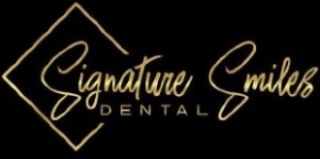



 The stomach acid in vomit is able to erode and soften strong materials, such as bone, not to mention soft tissue such as your gums. The softening of the enamel can increase susceptibility to the more common bacterial infections and enamel erosion can lead to increased sensitivity. Both of these can eventually lead to the requirement of extractions, restorative work or other procedures.
The stomach acid in vomit is able to erode and soften strong materials, such as bone, not to mention soft tissue such as your gums. The softening of the enamel can increase susceptibility to the more common bacterial infections and enamel erosion can lead to increased sensitivity. Both of these can eventually lead to the requirement of extractions, restorative work or other procedures.
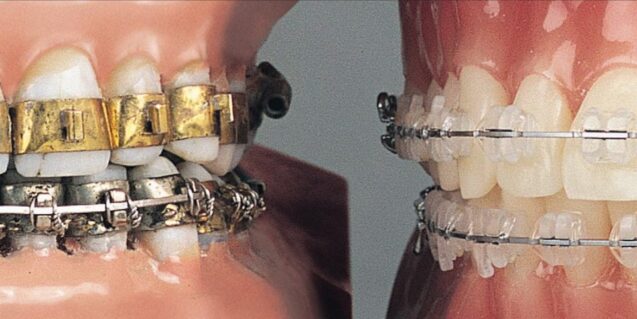
 The history of orthodontic work goes back well beyond 100BC, leaving us with almost unrecognisable precursors.
The history of orthodontic work goes back well beyond 100BC, leaving us with almost unrecognisable precursors. It wasn’t until the 1700s that orthodontic work progressed significantly, being particularly prevalent in France. New practices such as the removal of ‘third molars’ (wisdom teeth) had become common. With credit to French researcher, Pierre Fauchard (publisher of The Surgeon Dentist; or Treatise on the Teeth), the concept of wires and brackets restrained to the teeth was explored. This was further supported by his invention of ‘the bandeau’ (a metal horse shoe shaped frame bound to the teeth), along with other cosmetic devices such as bridges. The bandeau acknowledged the desire for round symmetrical teeth alignment, and used a simple device (as shown in the image above) to force teeth movement into the mould.
It wasn’t until the 1700s that orthodontic work progressed significantly, being particularly prevalent in France. New practices such as the removal of ‘third molars’ (wisdom teeth) had become common. With credit to French researcher, Pierre Fauchard (publisher of The Surgeon Dentist; or Treatise on the Teeth), the concept of wires and brackets restrained to the teeth was explored. This was further supported by his invention of ‘the bandeau’ (a metal horse shoe shaped frame bound to the teeth), along with other cosmetic devices such as bridges. The bandeau acknowledged the desire for round symmetrical teeth alignment, and used a simple device (as shown in the image above) to force teeth movement into the mould. During the 20th century much of the orthodontic routine mirrored that of today, with the use of impressions for more acute analysis, the frequent of X-rays. A range of materials were used in orthodontics, from organic materials, such as and wood and ivory, to the preferred, but expensive, materials such as silver and gold. Due to the properties of gold, its malleability made it the seemingly perfect candidate; however the expense limited its demand to wealthier classes.
During the 20th century much of the orthodontic routine mirrored that of today, with the use of impressions for more acute analysis, the frequent of X-rays. A range of materials were used in orthodontics, from organic materials, such as and wood and ivory, to the preferred, but expensive, materials such as silver and gold. Due to the properties of gold, its malleability made it the seemingly perfect candidate; however the expense limited its demand to wealthier classes. Finally we have reached the familiar modern day braces. With quick treatment durations (spanning from a few months to a few years), and significantly less painful technologies; the slight discomfort associated with modern day braces is truly overlooked. The treatment of orthodontic work is more accessible than ever before, with reduced prices and an increase in practices. With over 60% of Australians considering or undertaking orthodontic treatment, the rise of the industry has resulted in 552 orthodontic practices just within the country.
Finally we have reached the familiar modern day braces. With quick treatment durations (spanning from a few months to a few years), and significantly less painful technologies; the slight discomfort associated with modern day braces is truly overlooked. The treatment of orthodontic work is more accessible than ever before, with reduced prices and an increase in practices. With over 60% of Australians considering or undertaking orthodontic treatment, the rise of the industry has resulted in 552 orthodontic practices just within the country.



